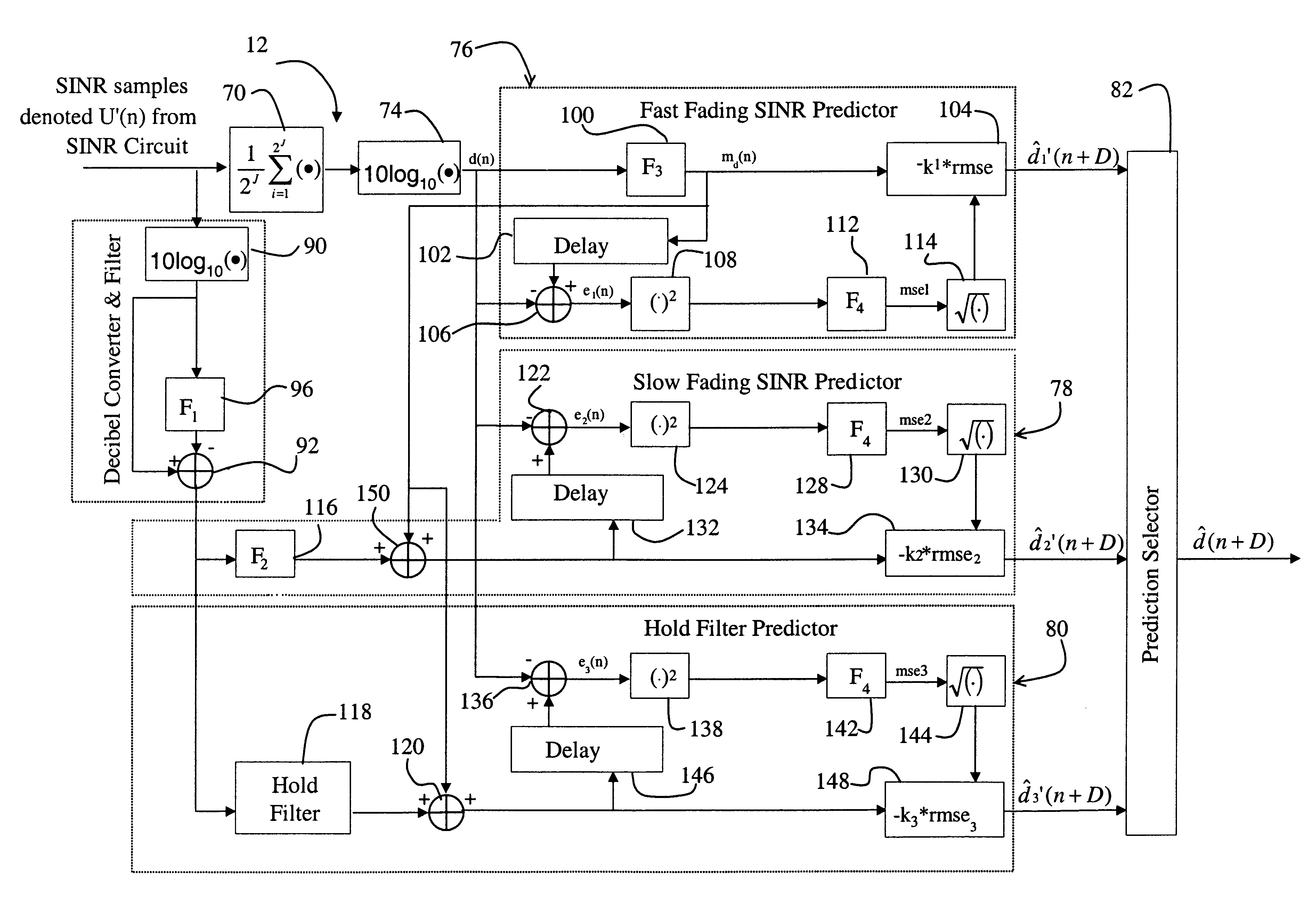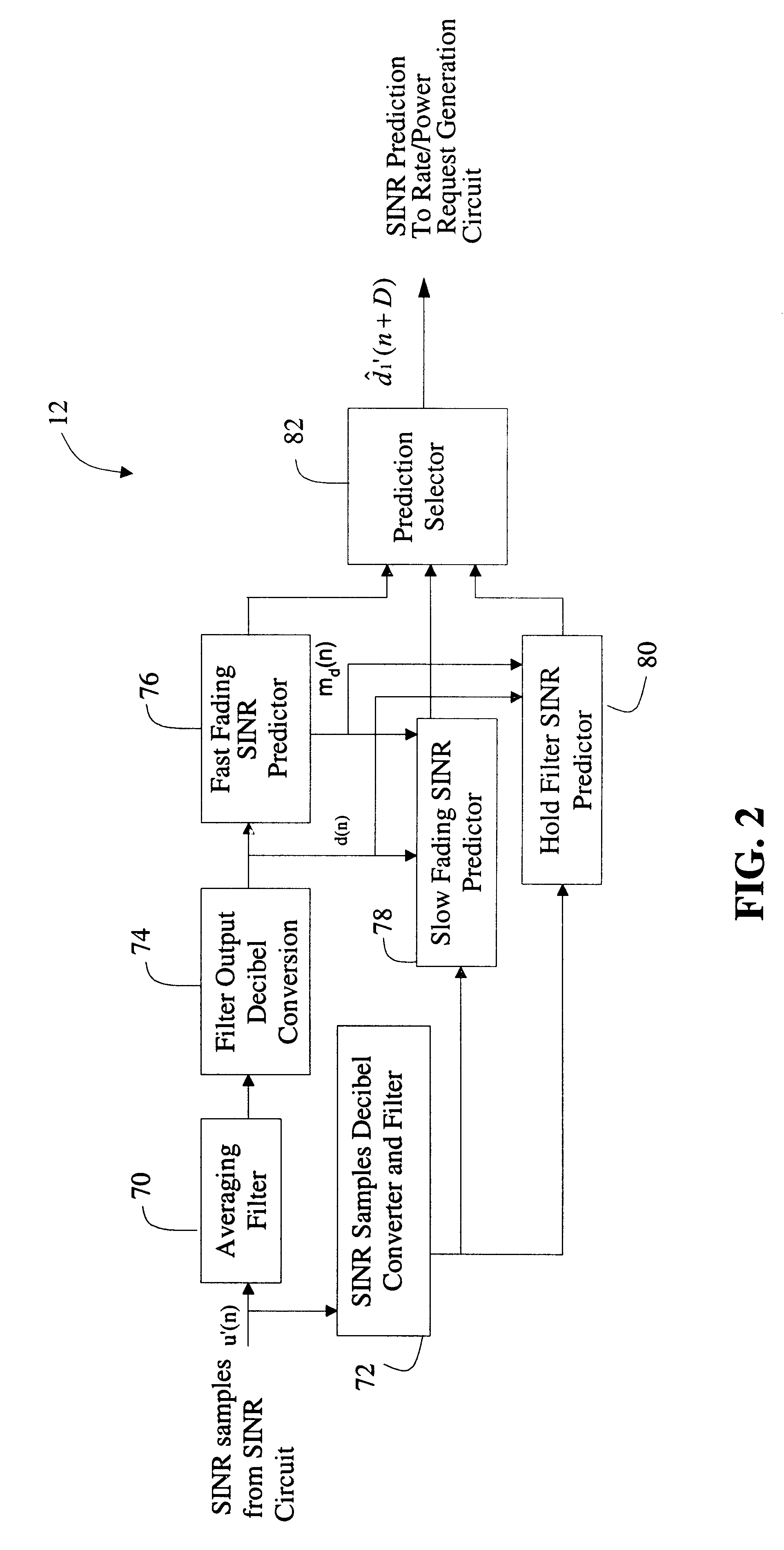System and method for accurately predicting signal to interference and noise ratio to improve communications system performance
a technology of interference ratio and signal, applied in the field of communication systems, can solve problems such as severe attenuation, multipath fading, and impose stringent and fixed delay requirements
- Summary
- Abstract
- Description
- Claims
- Application Information
AI Technical Summary
Problems solved by technology
Method used
Image
Examples
Embodiment Construction
While the present invention is described herein with reference to illustrative embodiments for particular applications, it should be understood that the invention is not limited thereto. Those having ordinary skill in the art and access to the teachings provided herein will recognize additional modifications, applications, and embodiments within the scope thereof and additional fields in which the present invention would be of significant utility.
CDMA systems generally employ one of two methods to transmit a known pilot signal together with an unknown data signal. The methods include the pilot or reference symbol assisted method and the pilot channel assisted method. In the pilot symbol assisted method, a pilot signal comprising known symbols is spread by a pseudo-noise (PN) sequence and inserted into a data sequence spread by the same PN sequence in preparation for transmission to one or more mobile stations. In the pilot channel assisted method, the pilot signal and the data signa...
PUM
 Login to View More
Login to View More Abstract
Description
Claims
Application Information
 Login to View More
Login to View More - R&D
- Intellectual Property
- Life Sciences
- Materials
- Tech Scout
- Unparalleled Data Quality
- Higher Quality Content
- 60% Fewer Hallucinations
Browse by: Latest US Patents, China's latest patents, Technical Efficacy Thesaurus, Application Domain, Technology Topic, Popular Technical Reports.
© 2025 PatSnap. All rights reserved.Legal|Privacy policy|Modern Slavery Act Transparency Statement|Sitemap|About US| Contact US: help@patsnap.com



